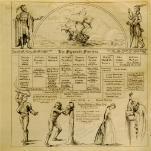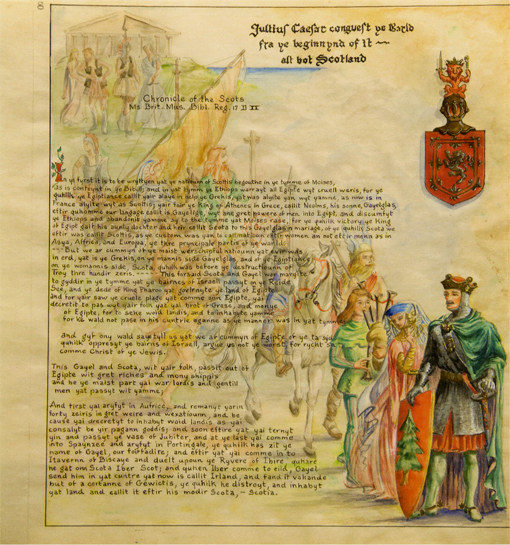This was originally published in September 2012 as part of our Item of the Month series.
If the current run of the BBC television programme, ‘Who Do You Think You Are’ has inspired you to start exploring your ancestry, or if you have already researched your family tree, we think you’ll enjoy our featured collection for September.
This month, we highlight the genealogical artwork of Helen Tooker (1906-1998), an American artist who grew up in Massachusetts and trained at the Boston Museum School of Art. Her talent first became apparent when, ‘[f]rom the time I was 2, I’d pencil on anything. I don’t remember learning to draw. It was just something I knew. I’m a compulsive painter.’1 Helen married early, and, following her husband’s death in the 1930s, she supported their five young children through her artwork, turning her hand to sign painting, designing for an oilcloth company, making trajectory studies on early missiles for an aircraft company, and eventually establishing a small painting, decorating and maintenance company in Florida, where she settled for the rest of her life. As a professional artist, she mastered various media including sculpture, calligraphy, seascapes and fine portraiture.

Helen also enjoyed a lifelong interest in genealogy, stimulated by her early correspondence with a cousin of her mother’s. In the 1950s, she began to research her ancestry more seriously, and her two great interests were combined when the familial information she had gathered became the basis for a set of genealogical charts. Created in black ink and watercolour, the charts purportedly trace the ancestry of Helen’s parents, Emily White Perkins and Harry Landon Tooker, back into early English, Irish and Scottish history. Many are illustrated, very effectively, with ink drawings. The example below traces the lineage of Helen Tooker's mother, Emily Perkins, back to nine of the 'Plymouth Planters' (settlers of the Plymouth Colony, an English territory in seventeenth-century North America). The illustrations at the base of the chart show Emily’s defiant seventeenth-century forebear, Luke Perkins being punished for insulting the town minister, and Luke’s wife, Elizabeth, being chastised at Essex County Quarterly Court for a display of vanity in 1682.
Other charts in the series, such as the eye-catching example opposite, are richly coloured and decorated and feature extracts from historical manuscripts – in this case, the Chronicle of the Scots.

Helen Tooker stored her finished charts for many decades in a portfolio beneath her bed, unseen. However, after Helen’s death, her daughter gifted them to the University of Strathclyde so that they might be displayed and appreciated by a wider audience. The charts are not only beautiful and decorative objects in their own right but also show how creativity, artistic talent and a little imagination may be applied to enhance the basic outline and format of a family tree. If this preview has inspired you to follow suit, why not visit us on Level 5 of the Andersonian Library to view all 23 charts in the series?
Anne Cameron, Archives Assistant
1 B. Caffery, ‘Helen Tooker’, Evening Independent [St Petersburg, Florida], 17 September 1980.